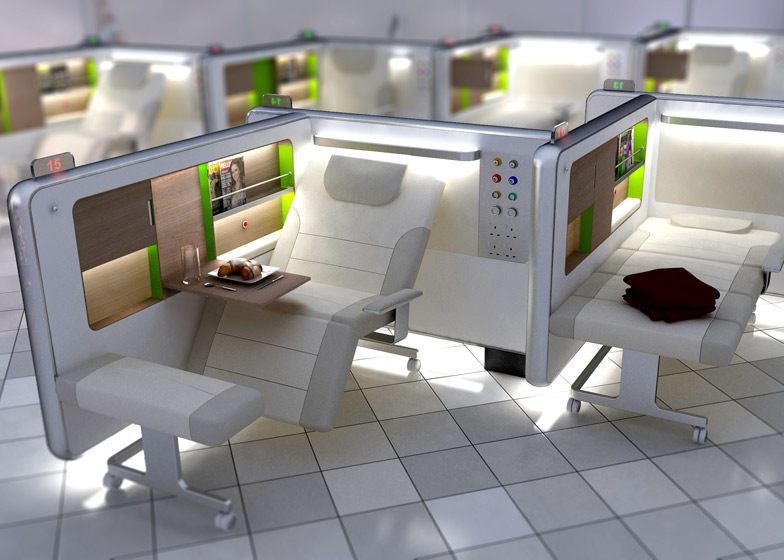A hospital lounge for recovering patients is the next extract chosen by Dezeen editor-in-chief Marcus Fairs from our Book of Ideas.
"There's been a lot of discussion lately about how design has lost its sense of social responsibility and indeed, a lot of the stuff we publish on Dezeen doesn't set out to make the world a better place," says Fairs. "Meanwhile there are vast tracts of human experience that are virtually design-free zones. Hospitals wards fall into this category - they've barely changed since the days of Florence Nightingale and are often miserable, frustrating places to stay or visit."
"Priestmangoode have, off their own backs, rethought the hospital ward with the same care they might apply to a hotel or passenger jet interior. Even the name Recovery Lounge makes you feel better; so much more positive than Acute Care Ward or Critical Care Unit, which seem designed to scare patients."
"The Recovery Lounge is one of those ideas that isn't yet a reality, but deserves to be," he concludes.
Recovery Lounge by Priestmangoode
The name alone suggests a radically different approach to hospital design. Rather than a ward, which conjures images of rows of beds, this is a lounge where people can relax. As opposed to focussing on the illness or the medical procedure, it is a place for recovery. Recovery Lounge is a self-initiated project by Priestmangoode. The industrial designers have extensive experience in designing interiors for passenger jets, hotels and airports, and wanted to see if they could apply the lessons learned in those sectors to the neglected area of hospital interiors.
Intended for people recovering from minor operations, the lounge offers each patient their own zone, which is carefully oriented to maximise privacy. These zones are designed for comfort as well as efficiency, with furniture raised above the floor to allow easier cleaning, and push-button reclining beds like those found on aeroplanes.
The lounge borrows its staggered layout from first-class airline cabins, allowing more beds per square metre and improving sight lines, so staff can easily monitor patients and attend to their needs in a shorter amount of time. This in turn could save money by reducing the number of nurses required.
Recovery Lounge is part of a report published in 2010 by Priestmangoode called the Health Manifesto, which looks at how better hospital design could lead to health benefits for patients and significant cost savings for the NHS.
Read more about this project on Dezeen

